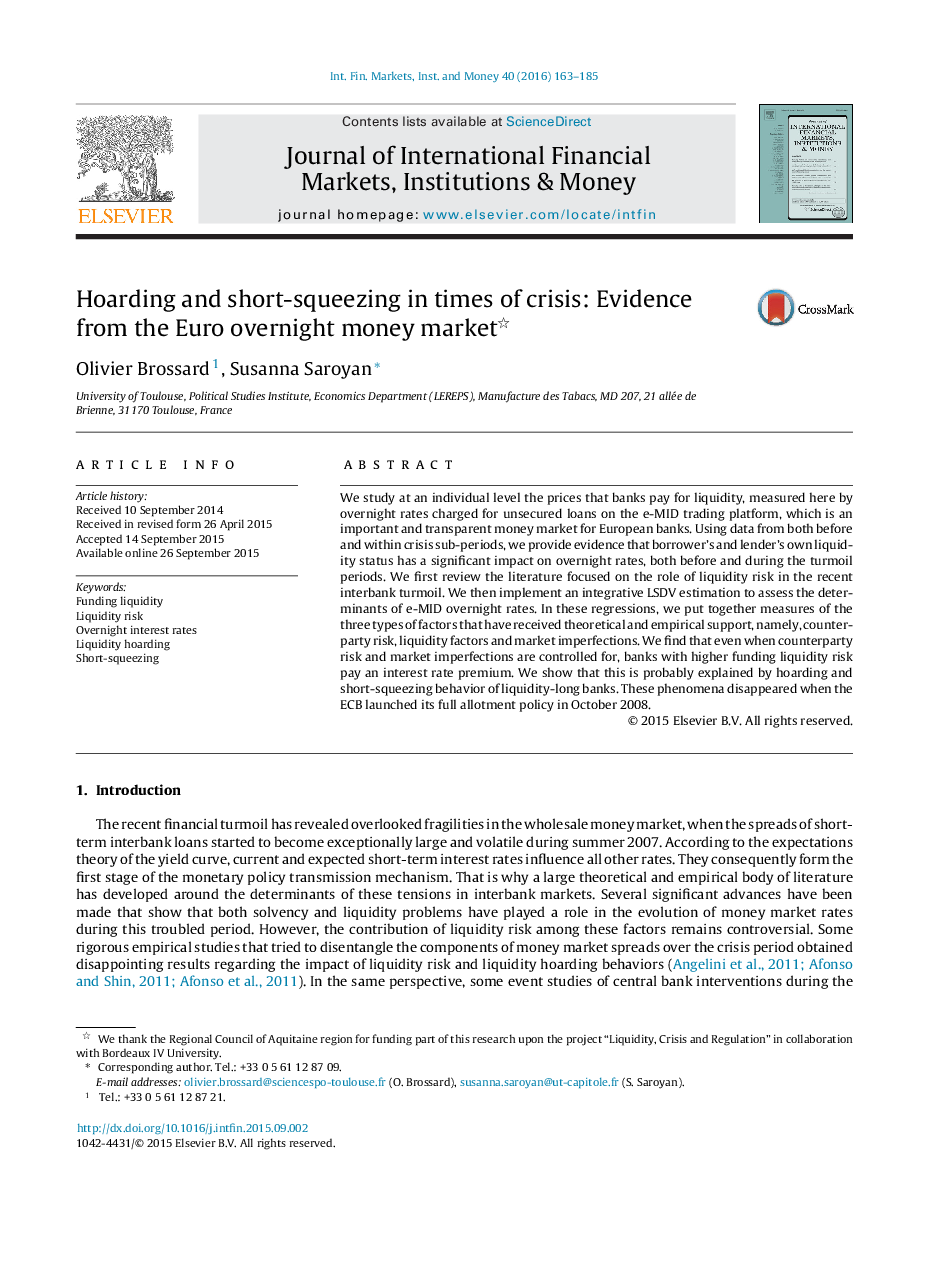| Article ID | Journal | Published Year | Pages | File Type |
|---|---|---|---|---|
| 7364642 | Journal of International Financial Markets, Institutions and Money | 2016 | 23 Pages |
Abstract
We study at an individual level the prices that banks pay for liquidity, measured here by overnight rates charged for unsecured loans on the e-MID trading platform, which is an important and transparent money market for European banks. Using data from both before and within crisis sub-periods, we provide evidence that borrower's and lender's own liquidity status has a significant impact on overnight rates, both before and during the turmoil periods. We first review the literature focused on the role of liquidity risk in the recent interbank turmoil. We then implement an integrative LSDV estimation to assess the determinants of e-MID overnight rates. In these regressions, we put together measures of the three types of factors that have received theoretical and empirical support, namely, counterparty risk, liquidity factors and market imperfections. We find that even when counterparty risk and market imperfections are controlled for, banks with higher funding liquidity risk pay an interest rate premium. We show that this is probably explained by hoarding and short-squeezing behavior of liquidity-long banks. These phenomena disappeared when the ECB launched its full allotment policy in October 2008.
Keywords
Related Topics
Social Sciences and Humanities
Economics, Econometrics and Finance
Economics and Econometrics
Authors
Olivier Brossard, Susanna Saroyan,
